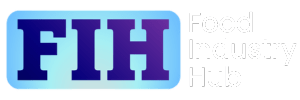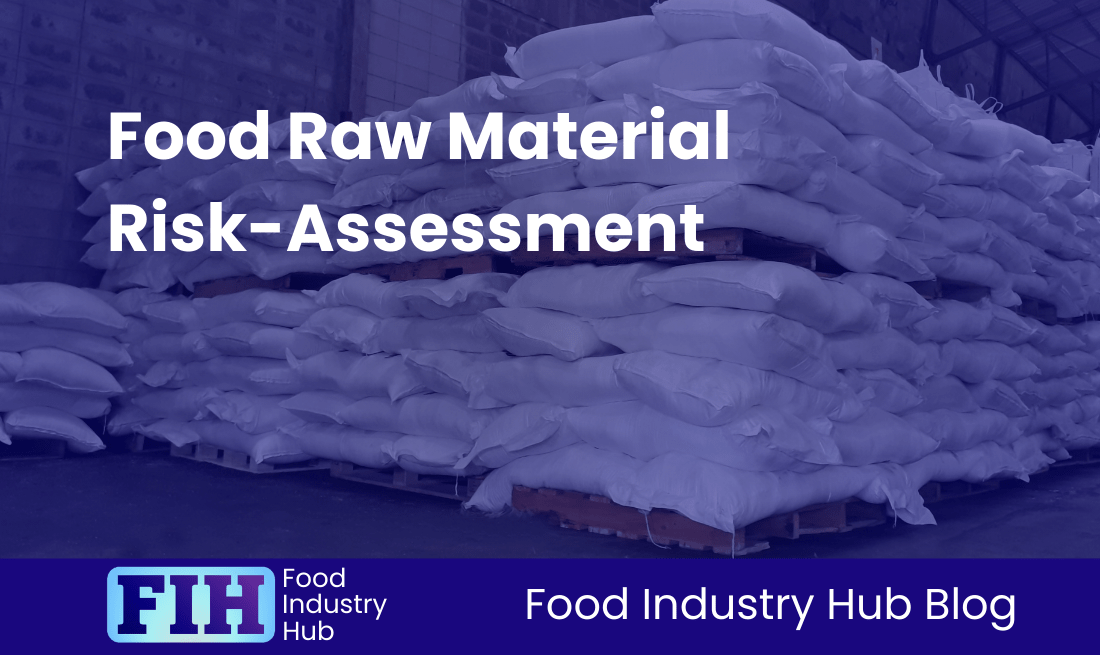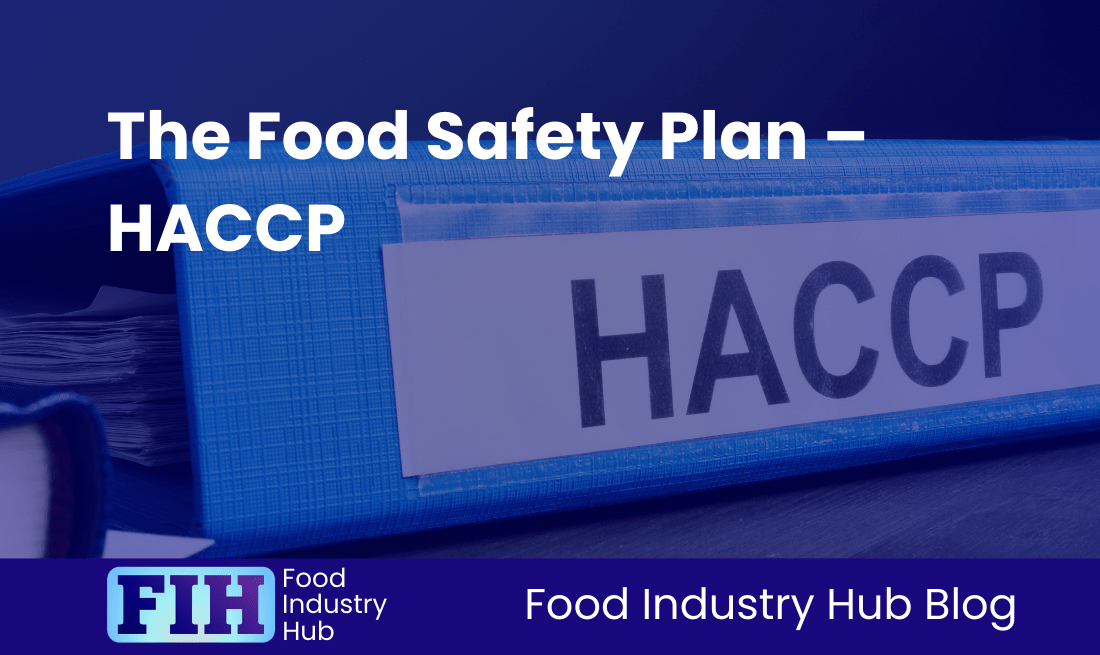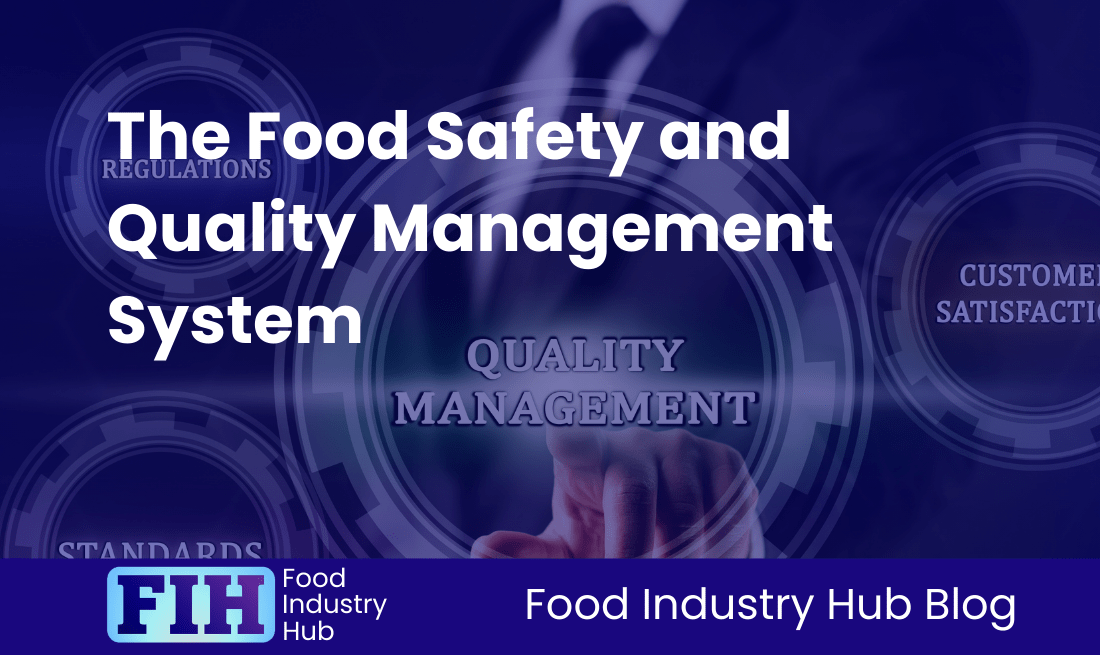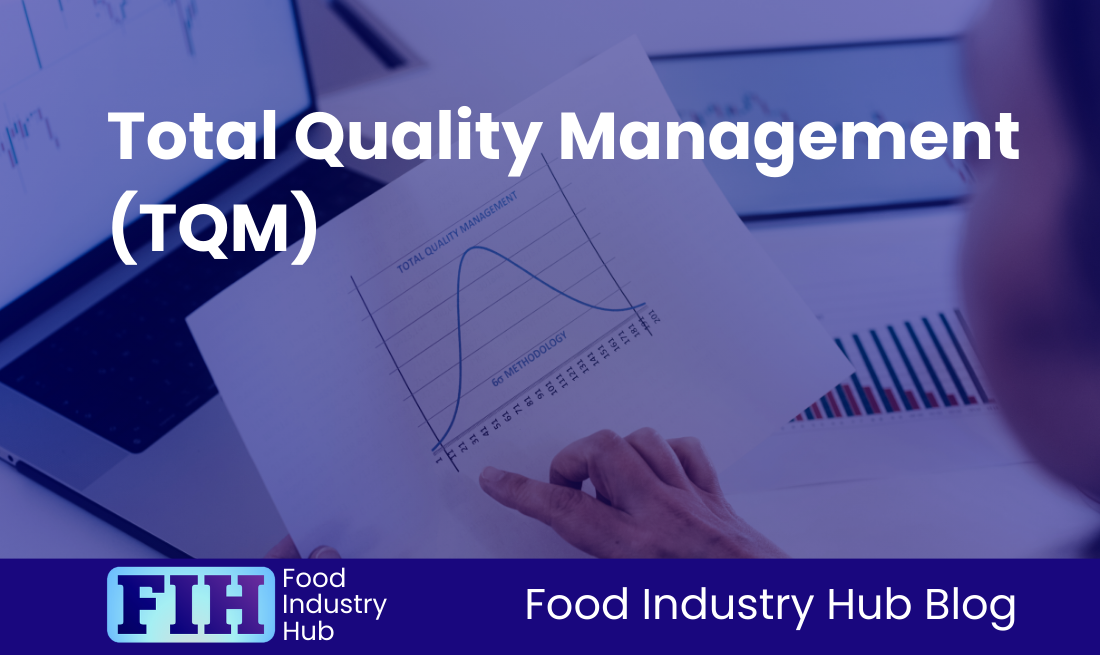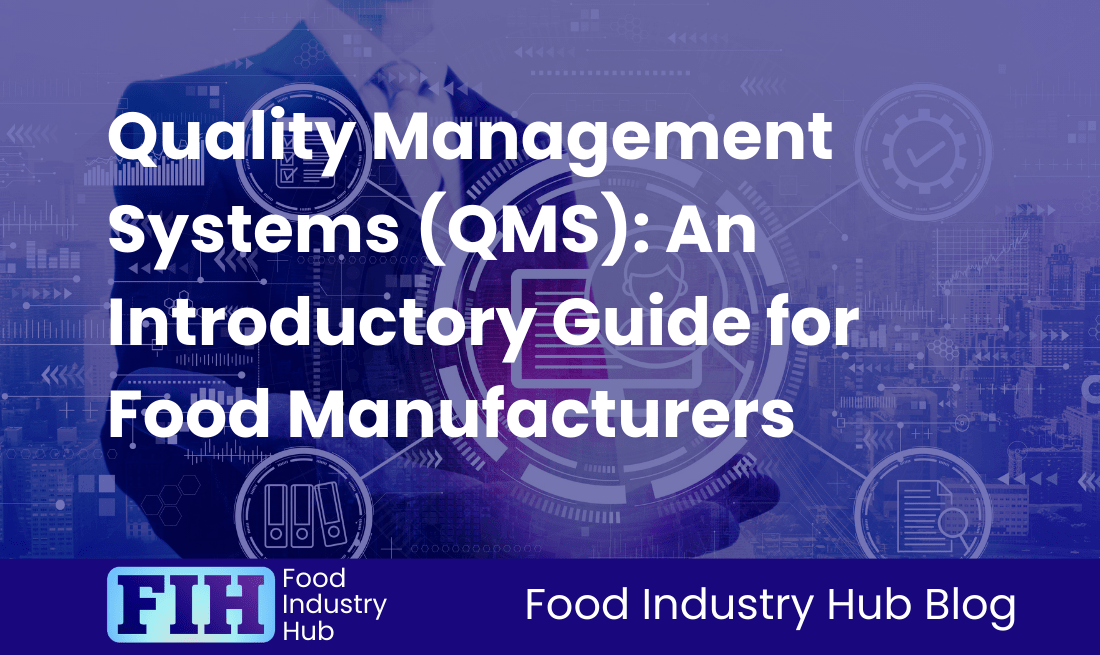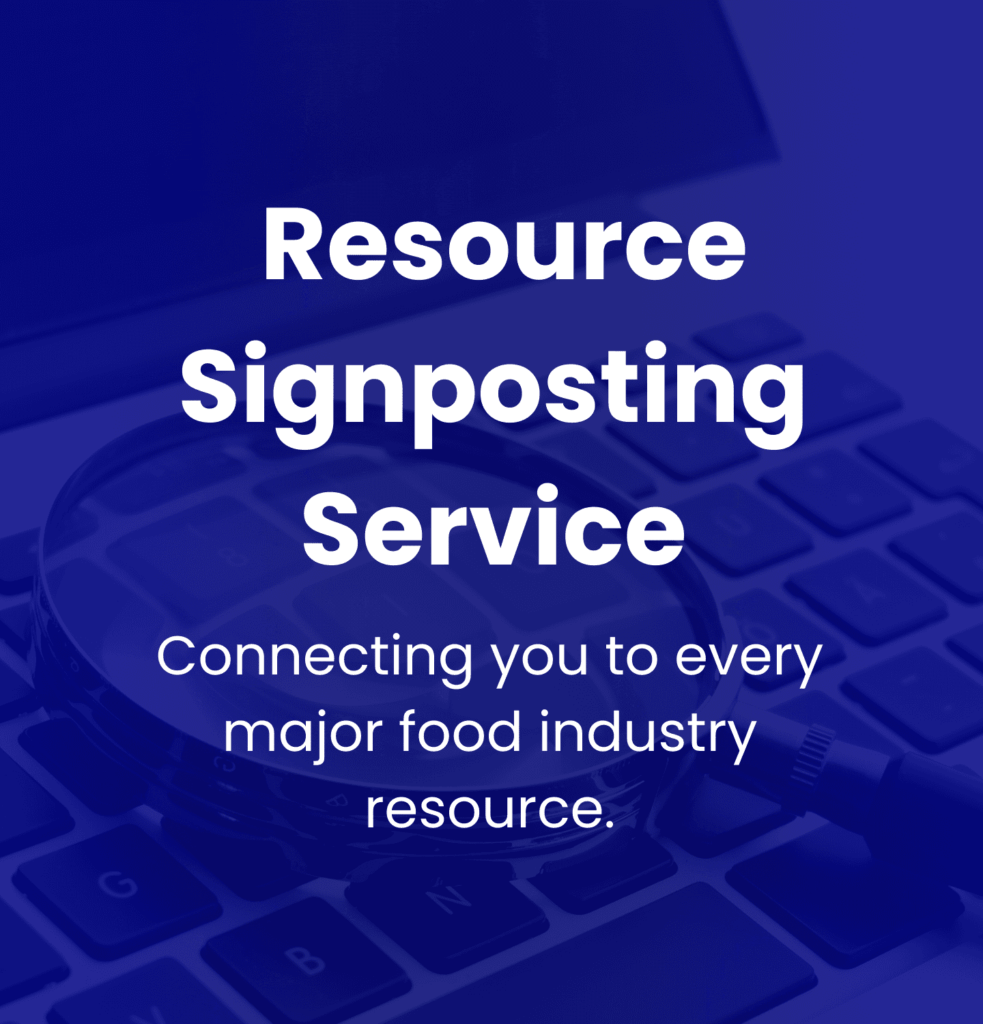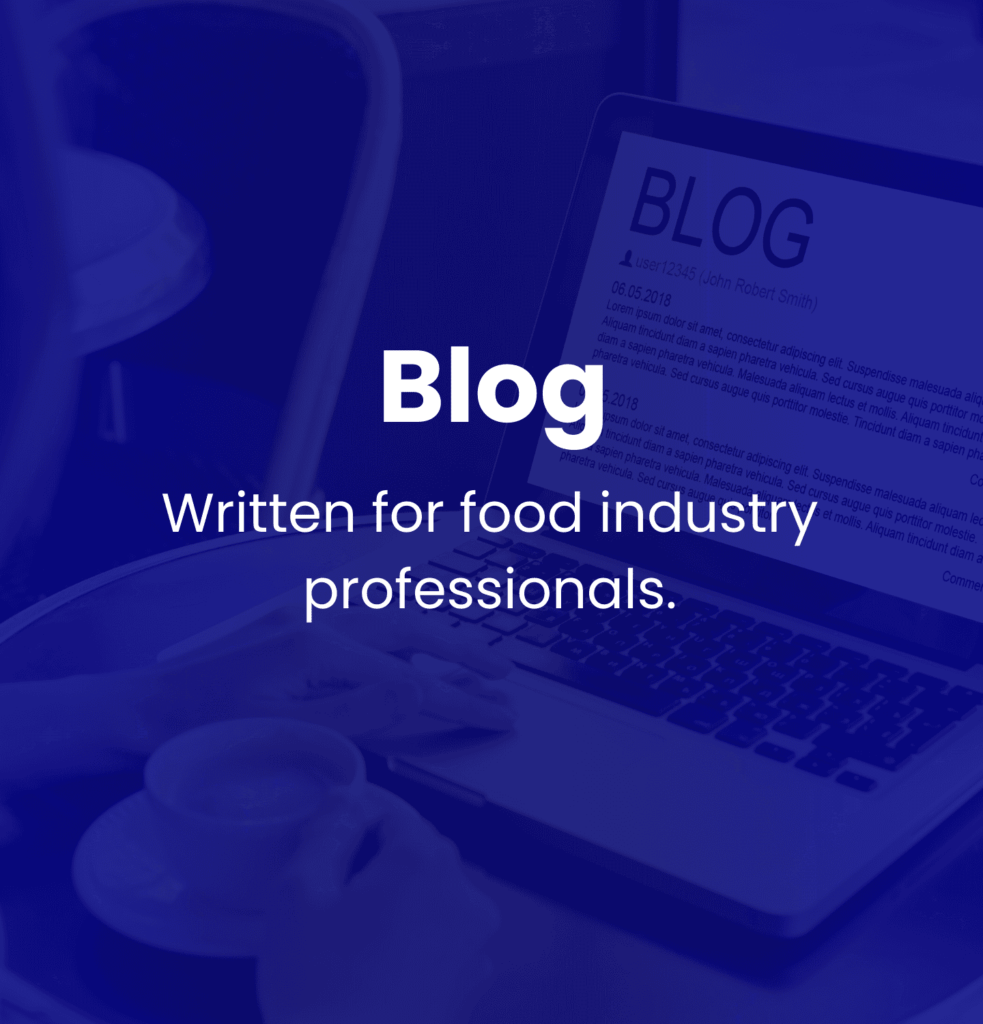Know: Specifications
Contents
Introduction
Key Takeaways
Raw Material Specifications
Product Specifications
Best Practices in Specification Management
Microbiological Standards Ensuring Food Safety
Chemical Profile
Understanding Legislative and Regulatory Standards
Specifying Nutrition and Allergens: Regulations and Challenges
Conclusion
Introduction
In food manufacturing, there is remarkable importance given to raw material and product specifications. These are fundamental requirements and expectations that back the safety, quality, and legality of food items. In the absence of these defined specifications, manufacturers might be opening themselves to risks such as production inconsistencies, safety hazards, and non-adherence to regulations, which could ultimately inflict harmful effects on the trust of consumers and the reputation of the brand.
Definitions
Raw Material Specifications are comprehensive documents that articulate the requirements raw ingredients are expected to satisfy before being employed in the process of food production. These cover a spectrum of factors, which include physical, chemical, biological, and sensory characteristics, as well as conformance with safety norms and regulatory prerequisites. Their importance is centred around ensuring that all incoming materials meet the necessary safety and quality standards.
Product Specifications exhibit the required characteristics of the final food products. These encompass elements such as quality characteristics, nutritional composition, ingredient criteria, and labelling particulars. By laying out these explicit parameters, manufacturers can ensure that their products adhere to safety norms and satisfy consumer expectations.
Role within the Food Manufacturing Industry
The contribution of specifications towards safety, quality and legality in food manufacturing is substantial. Serving as groundwork tools, they manage and monitor raw materials and products in alignment with quality expectations.
- Safety: Specifications provide essential assistance for identification and mitigation of risks linked with biological, chemical, and physical hazards. Manufacturers, by ensuring that raw materials align to defined safety norms, can considerably lower the chances of foodborne ailments and allergens seeping into the supply chain.
- Quality: Through clear specifications, it becomes possible to ensure product quality consistency by outlining permissible quality attributes and elucidating tolerable discrepancies. This consistency is integral to align with consumer expectations and safeguard brand value.
- Legality: Specifications are expected to adhere to legal prerequisites such as labelling requirements and allergen declarations. Ensurance of these standards’ adherence is important to legally sound operations and can help reduce the risk of legal consequences.
Significance of Key Themes
Several key themes emerge in relation to raw material and product specifications:
- Food Specification Parameters: These parameters include measurable attributes like moisture content, pH levels, and microbial limits that are required to be met by both raw materials and end products. They hold a primary role in ensuring product safety and integrity.
- Acceptable and Reject Specification Values: Clear determination of acceptable ranges along with rejection thresholds is important for quality control. These targets facilitate manufacturers in deciding whether the materials or products are apt for use.
- Quality Attributes: Specifications envelop integral quality attributes like taste, texture, and appearance which are essential in ensuring consumer satisfaction and fidelity.
- Approval Processes Documentation: For specifications, a formalised approval process assures that all stakeholders like suppliers and customers are on the same page. This process upholds transparency, accountability, and regulation adherence.
Association with Food Safety, Quality, and Legality
The rigorous adherence to raw material and product specifications is closely linked to compliance with existing food safety norms and quality assurance practices. They support systems like Hazard Analysis and Critical Control Points (HACCP). Accurate specifications are also crucial for compliance with legal norms, thereby protecting against product recalls and fortifying consumer faith.
Raw material and product specifications are indispensable aspects of food manufacturing. They create a structure that ensures every segment of production aligns with required safety, quality, and legal standards, thereby securing consumers and the food supply chain’s integrity. Through constant review and robust development, these specifications carry forward as best practices that uphold industry standards.
Key Takeaways
Specifications control elements such as composition, allergen exposure, and quality attributes. Collectively, they ensure that products not only adhere to safety and quality standards but also build consumer trust. Proficient management of these attributes necessitates careful documentation and confirmation processes throughout the supply chain, reducing risks linked to non-compliance like recalls or legal issues.
Definition and Importance of Food Specifications
Food specifications are comprehensive guides that delineate the stringent requirements suppliers must meet when providing raw materials or finished products. Such specifications enable all items to conform to established safety, quality, and regulatory standards. This includes microbiological, chemical, and physical parameters, for instance, setting permissible limits on contaminants and pathogens. Specifications are instrumental in ensuring adherence to safety and legal standards. By rigidly enforcing regulations, specifications aid in reducing risks associated with contamination, allergen incidents, and inaccurate nutritional labelling. This, in turn, ultimately safeguards processors from liability in instances of disputes over product defects.
Quality Attributes
Quality attributes play an important role in maintaining product consistency, an element key to gaining consumer trust. Specifications that distinctly define attributes like taste, texture, and appearance can boost brand reputation and customer loyalty. Existing quality assurance methods within an organisation can be greatly enhanced by well-defined quality attributes, assuring that procurement, production, and quality control align effectively. This reduces miscommunication and emphasises product integrity.
Specifications are indispensable tools in ensuring products are safe to consume and meet quality expectations. These frameworks serve in risk management, as they provide clear guidelines for suppliers to ensure consistency in product quality across different batches. This consistent deliverable is a cornerstone for sustaining consumer trust and aligning with regulatory requirements.
Role within Quality Control Systems
In the framework of Quality Control Systems (QMS), specifications play an integral part in ensuring quality and managing risk. By setting universal quality standards, they ascertain that products meet pre-sanctioned criteria before they are released to the market. Consequently, specifications steer manufacturing procedures and testing methods, averting deviations that could undermine product integrity.
International Food Regulations
The obligation to comply extends beyond domestic laws and encompasses international food standards. Understanding and adhering to such frameworks, notably FDA guidelines and EU regulations, are indispensable aspects of maintaining product safety, accuracy in labelling, and traceability. Failing to comply can lead to severe repercussions, including fines, product recalls, and the loss of market access. It’s vital that food manufacturers harmonise their practices with both local and international legal requirements to preserve their market presence and maintain consumer confidence.
Food Industry Hub Management Systems can significantly boost the effectiveness of your food safety and quality management system, leading to improved confidence and elevated quality assurance throughout your operations.
Raw Material Specifications
Raw Material Specifications are essential documents that ensure food safety, uphold quality assurance, facilitate regulatory compliance, and safeguard consumers. Incorporated in these documents are precise requirements for suppliers to adhere to regarding raw materials (food ingredients and packaging materials). This adherence centralises quality consistency, mitigates possible hazards, and promotes conformance to prevailing food safety laws and regulations.
The Significance of Raw Material Specifications
Raw Material Specifications offer invaluable insight to manufacturers about the properties and safety requirements of incoming ingredients and packaging materials. They are indispensable for comprehensive intake inspections and maintaining supply chain risk management, both of which are fundamental in food safety. By precisely understanding the specifications related to raw materials, manufacturers have the ability to implement effective risk management and quality control strategies.
Specification Parameters
The richness of detail in these specifications become evident when diving briefly into specific parameters:
- Composition: This outlines the exact ingredients and their proportions to ensure materials adhere to intended recipes and labelling requirements, and deter adulteration.
- Allergen Exposure: This includes compulsory declarations of allergenic substances to protect susceptible consumers and facilitate compliance with labelling legislation.
- Quality Attributes: These determine sensory properties like taste, texture, and appearance; setting acceptable standards that augment consumer satisfaction and safeguard brand integrity.
- Microbiological Standards: These set acceptable limits for pathogens and spoilage organisms, instrumental in preventing foodborne illnesses over a product’s shelf life.
- Chemical Profile: This outlines allowable contamination levels, preservatives, and additives, helping to ensure consumer safety.
- Product Stability: This section addresses how ingredients and products uphold quality under various conditions, influencing their shelf life and storage stipulations.
- Positive Release Criteria: These detail the conditions or test results required before raw materials are approved for use.
- Pack Format: This pertains to packaging types and their suitability for food contact, affecting product protection, shelf life, and compliance with regulatory standards.
- Shelf Life and Storage Requirements: These define the duration and conditions that ensure products remain safe and of high quality, a key factor to consider for logistics and consumer safety.
- Ethical and Sustainability Information: Reflecting the growing market demand for responsible sourcing and environmental impact reduction, these can impact brand reputation and compliance expectations.
- Legislative and Regulatory Standards: These ensure products meet all current food laws, including ingredient allowances and labelling accuracy, as enforced by relevant authorities.
Parameters and Their Context in Food Safety and Quality
Specifications parameters are significant in the wider context of food safety and quality. They act as protective measures for consumers by minimising risks including contamination, allergen cross-contact, and mislabelling while providing clear standards for regulatory authorities. Adherence to such specifications reduces the risk of product recalls, legal liabilities, and potential damage to brand reputation.
Raw Material Specifications play a foundational role in the food manufacturing sector. They standardise production, ensure food safety, maintain consistent quality, and facilitate regulatory compliance. By holistically addressing a spectrum of aspects from composition to sustainability, these documents create a sturdy foundation that ensures consumer safety, aids manufacturers, and aligns with regulatory bodies.
Specifications within Quality Management Systems (QMS)
Specifications play an integral role in Quality Management Systems (QMS) within the food manufacturing industry. They clearly outline specific prerequisites of raw materials, ingredients, packaging, and finished goods and provide detail for attributes like physical characteristics, chemical composition, microbiological limits, and labelling stipulations. By doing so, they aid in ensuring the safety and quality of each component before it reaches the market.
Effective specification management aids in maintaining product integrity across the production cycle, providing a measurable standard that complies with both regulatory prerequisites and consumer needs.
The Role of Specifications in Facilitating HACCP
An integrated approach to Hazard Analysis and Critical Control Points (HACCP) methods can be achieved by incorporating specifications into systemic frameworks. These specifications outline specific quality parameters that steer the monitoring process and indicate necessary interventions for maintaining regular quality control during production. Specific microbiological limits, chemical compositions, and other safety-related terms are effectively defined, which allows for a comprehensive risk assessment at the point of use.
Importance of Specifications in Ensuring Readiness for Audits
In the process of audit readiness, specifications are vital due to their capacity to provide documented evidence of adherence to industry standards and regulations. During an audit, they serve as a reference point to verify the adherence of raw materials, production processes, and end products to the stated specifications. Comprehensive and readily available specifications enhance transparency across operations, enabling manufacturers to show their dedication to quality control and regulatory compliance. This contributes significantly to upholding an organisation’s credibility and mitigates risks during audits, while ensuring the possession of necessary certifications.
Steps and Significance of Protocols That Handle Deviations from Guide Specifications
Setting up protocols to manage deviations from specifications forms a key element in upholding both product integrity and consumer safety. Successful protocols generally follow a systemic method including several steps:
- Observation: Regular inspections and testing to recognise deviations from specifications.
- Root Cause Analysis: A thorough investigation of the root cause of deviations to understand the contributing factors.
- Corrective Actions: Immediate implementation of corrective steps to rectify the identified issues.
- Preventive Actions: Establishing preventive measures to circumvent the recurrence of similar deviations in the future.
- Documentation: Detailed documentation of all occurrences and processes aids in continuous improvement within the QMS.
Resolving Consumer Issues
Unambiguous specifications have a significant role in addressing consumer complaints about product issues. When such complaints arise, possessing well-documented specifications equips manufacturers with the ability to quickly identify possible deviations, regardless of whether they’re linked to raw materials, processing conditions, or handling procedures. This capacity to trace issues to specific batches or processes enables faster resolution, thereby enhancing customer satisfaction and trust in the brand. Additionally, clear specifications aid in maintaining accountability and transparency, both of which are highly valued in today’s competitive food market.
Glossary: Quality Management Systems
Certificate of Analysis (COA) and Its Correlation to Specifications
The Certificate of Analysis (COA) is a document that provides verifiable results for a particular batch of raw material or the finished product, confirming its compliance with set quality standards. The COA’s direct correlation to specifications, by documenting compliance in composition, safety, and quality attributes, solidifies its role in catering to the integrity of the food supply chain.
Interpretation of Tolerance Bands and Their Implications on the Product
Tolerance bands specify the range of acceptable variances in product specifications without influencing product quality. They play a key role in decisions pertaining to product acceptance, ensuring subtle variations due to natural processes or manufacturing do not lead to wastage, while also maintaining compliance with expected quality benchmarks.
Product Specifications
Product specifications bear significant weight in safeguarding quality and compliance within the food manufacturing sector. These stipulations are deeply intertwined with both raw materials and processing conditions, which come togerther to influence finished product characteristics.
Interrelation between Raw Materials and Finished Product Criteria
Specifications for raw materials delineate their required quality standards, which, in turn, dictate the quality level of finished products. These specifications articulate critical biological, chemical, and physical attributes of raw materials, verifying their suitability for the final product. Attributes such as particle sizes and moisture content have the potential to alter a product’s taste and texture—thus, their precise specification is of the essence. Research substantiates that variable raw material quality may generate inconsistencies in a product’s final characteristics, a risk that can undermine consumer safety and brand reputation.
Setting acceptable quality parameters for raw materials is of inherent importance since these parameters enable manufacturers to mitigate risks related to variation in these materials’ qualities. Such standards offer manufacturers an opportunity to meticulously analyse incoming materials for possible contaminants, allergens, and harmful substances, thus fortifying the integrity of the final product.
Integrating Hazard Analysis and Critical Control Points (HACCP) methodologies into raw material specifications proves indispensable. This facilitates the identification of potential risks throughout the supply chain, notably those associated with allergenic ingredients and microbiological threats. By establishing transparent specifications for raw materials within HACCP plans, food manufacturers are empowered to exercise better control over risks and efficiently address any non-conforming materials, thereby promoting product safety.
Core Components
The essentials of food specifications commonly embody several core components:
- Product Description: An inclusive detail about the product is given, comprising its distinct features, nutritional components, quality standards, and any pertinent certifications like organic or gluten-free.
- Ingredients and Standards: Specifications entail a complete list of ingredients, their acceptable origins, chemical properties, and quality standards to guarantee safety and regulatory compliance.
- Safety Standards: Safety requirements are specified that outline needed control procedures, ensuring regulatory compliance and risk reduction for potential contamination or other safety issues.
Foundational Role in Quality Assurance
Food specifications emerge as a fundamental pillar in guaranteeing quality assurance within food production. By offering a design for production, they facilitate maintaining uniform product quality across batches. This uniformity is necessary, not only in fulfilling consumer expectations but also in complying with legal demands. Assurance of products meeting stipulated specifications decreases risks associated with food safety and improves overall operational efficiency within the production environment.
Multidimensional Parameters of Food Specifications
Food specifications incorporate multidimensional aspects that are indispensable to product quality and consumer safety:
Sensory Attributes
Sensory aspects signify the qualitative traits of the product, including taste, texture, smell, and appearance. Equipment such as colorimeters and sensory panels are frequently employed to objectively measure these aspects, certifying that products conform to consumer expectations and internal quality standards.
Chemical Composition
Specifications illustrate the product’s chemical properties such as pH levels, water activity, and nutritional content. This information is key in determining the product’s safety and stability during its lifecycle. Striving for consistency in these chemical properties aids in meeting regulatory requirements concerning labelling and safety.
Microbiological Standards
Microbiological criteria establish that products are safe to consume. Specifications frequently set limits for harmful microorganisms such as bacteria and pathogens, outlining acceptable thresholds to prevent contamination. Regular scrutiny of these standards is important to maintain food safety.
Understanding the Distinction Between Objective vs. Subjective Criteria
Objective criteria represent measurable, quantifiable attributes such as nutritional composition, moisture content, and microbiological limits. Testing and verification of these aspects ensure consistency and alignment with regulatory standards. As an instance, setting a product’s moisture content at a maximum of 10% provides a consistent, measurable specification that laboratory testing can challenge for conformance.
In contrast, subjective criteria are associated with aspects such as taste, aroma, and texture that individuals might perceive differently. Though these aspects are important for consumer acceptance and satisfaction, they pose difficulties in standardisation and repeatability. Effective specifications ideally merge measurable parameters with insights from proficient sensory panels, establishing a wholesome view of product quality.
Sign-up for the Food Industry Hub Mail Service
We regularly produce new content for food industry professionals, and the Food Industry Hub Mail Service is the best way to stay up to date with the latest additions.
Signup today to be added to the Food Industry Hub mailing list.
Best Practices in Specification Management
Strategies for Uniformity and Clarity in Specifications Throughout the Supply Chain
Uniformity and clarity in food specifications play a key role in maintaining consistency across the supply chain. A centralised digital management system acts as a linchpin, enabling various stakeholders – including supply chain partners and in-house teams – to view and utilise the latest uniform specifications. This digital accessibility can significantly lessen the likelihood of errors or inconsistencies in sourcing raw materials and formulating products.
Integrating standardised templates for specifications provides a clear conspectus of ingredients, packaging, and labelling requirements. These templates can be indispensably useful in expressing all necessary elements in a consistent manner, thus minimising potential confusion and regulatory compliance concerns. Alongside these, regular reviews and updates are an essential task to keep specifications relevant, taking into account changes in regulations, customer expectations, and shifts in supply chain dynamics.
Utilising Digital Tools for Managing Specification Lifecycle
Automation is innovating specification management in the food manufacturing sector. The utilisation of digital platforms can streamline the process of creating specifications, enhance data integrity, and ensure timely updates are made available to all stakeholders.
Digital tools also maximise workflow efficiency through automated approval routing, reducing review cycles, and enabling mobile access for verifications at production sites. These technological advancements not only enhance transparency and accountability, but also contribute to the development of a more agile and resilient operational framework within the food manufacturing industry.
Microbiological Standards Ensuring Food Safety
International Microbiological Standards and Their Role in Global Compliance
In the face of an increasingly globalised food market, compliance with internationally accepted microbiological standards is imperative to guarantee product safety and access to international markets. Regulatory bodies such as the Codex Alimentarius and the European Food Safety Authority (EFSA) set thorough criteria for microbial limits. These standards provide acceptable microbiological levels for both pathogens and hygiene indicators and categorise results into satisfactory, borderline, and unsatisfactory segments to guide necessary actions [Source: Hong Kong CFS] [Source: EC] [Source: FAO].
Adhering to these standards has significant repercussions for international manufacturers as it directly impacts the safety and marketability of their products. It also establishes whether import regulations have been duly followed, thereby helping to prevent costly recalls and protect consumer health on a global scale.
Deep Dive into Terminology in Microbiological Standards
HACCP (Hazard Analysis and Critical Control Points)
A preventative system developed for food safety management, HACCP identifies, assesses, and manages biological hazards throughout the food production process. It incorporates microbiological criteria as control measures for preventing or eliminating hazards at crucial control points (CCPs). Within food manufacturing, HACCP calls for hazard analyses to pinpoint potential microbial risks, identify where microbiological testing or controls are needed, and use standards for microbiological limits to confirm process control and product safety.
cfu/g (Colony-Forming Units per Gram)
Colony-forming units per gram is a measurement unit that determines the number of viable microorganisms present in one gram of food. This measure is essential in evaluating microbial contamination levels and is predominantly used in microbial specifications. Effective management of cfu/g thresholds provides valuable insight into whether a food product meets safety and quality standards, with counts exceeding limits indicating a possible issue. By setting acceptable levels, for example, <10^4 cfu/g for many ready-to-eat foods (applicable to specific micro-organisms), manufacturers can take corrective actions if limits are surpassed.
Therefore, understanding microbiological standards, including pathogen testing and process hygiene criteria, is integral for food manufacturers looking to ensure food safety and maintain regulatory compliance alongside meeting international market demands. This expertise is vital for managing food safety measures, preserving consumer health, and upholding a robust food safety management system.
Chemical Profile
The Important Role of pH and Acidity Control in Food Production
pH and acidity levels are key factors in food production as they have a profound influence on product stability, safety, and sensory attributes. It is essential to maintain appropriate pH levels to inhibit microbial growth, especially harmful pathogens such as Clostridium botulinum which thrives in less acidic conditions. Food products with a pH lower than 4.6 are less susceptible to the growth of such pathogens, which is why acidification is a widely used preservation method for products like jams, pickles, and dairy items.
Additionally, pH and acidity levels impact nutrient solubility, the efficiency of preservatives, and the overall flavour profile of food items. For instance, careful acidification is necessary for cheese production to ensure the correct curd formation. Acidulants are also commonly incorporated into beverages to stabilise colour and enhance tartness.
Understanding Lipid Oxidation and Residue Testing in the Context of Product Quality
Lipid oxidation is a significant challenge in the food industry, especially with high-fat products. This chemical reaction can cause a rancid taste and smell, leading to poor product quality and consumer acceptance. Testing methodologies such as peroxide value (PV) measurement and Schaal test are frequently used to gauge the extent of lipid oxidation. The Schaal test particularly contributes by speeding up the oxidation process under strict conditions, enabling prediction of shelf life stability.
Alongside managing lipid oxidation, residue testing is also important for preserving food safety. This involves checking food products for harmful chemical residues, including pesticides, heavy metals, and unauthorised additives. Innovations in detection methods, such as chromatography and mass spectrometry, have been invaluable in detecting contaminants and ensuring adherence to safety regulations, forming an important part of any food manufacturer’s compliance strategy.
Importance of Compliance with Chemical Safety Standards and Their Overall Impact on Food Safety
Adherence to chemical safety standards is integral in preserving consumer safety and public health. Regulatory bodies like the FDA issue comprehensive guidelines governing the permissible levels of exposure to chemicals and the safe use of food additives, preservatives, and processing aids [Source: Noah Chemicals]. Compliance with these standards helps protect against foodborne illnesses and allergic reactions, and also improves transparency and trust in food products.
Implementing robust chemical control systems can positively influence a company’s market reputation. As consumers grow more knowledgeable about food safety and ingredient transparency, manufacturers can use compliance to distinguish their products, boost brand loyalty and ensure they meet global standards[Source: FDA] [Source: EC].
Dissecting Key Terms in Chemical Profile Management
Understanding Terms like the Kjeldahl Method and Schaal Test
Used frequently in the food industry, the Kjeldahl Method is a respected analysis technique for determining protein content. The process involves converting organic nitrogen into ammonia via digestion with sulphuric acid, followed by distillation and titration. This method ensures accurate nutritional labelling, and plays an important role in quality assurance and raw material specification across an array of food categories.
The Schaal Test assesses the oxidative stability of fats and oils. It involves heating samples under carefully controlled conditions to measure the onset of rancidity, thereby determining shelf-life and ideal storage conditions. For effective preservation methods and assurance of quality standards in final products, this test proves to be of immense value for food manufacturers.
The effective use and understanding of these methods constitute a significant contribution towards ensuring food safety, quality, and consumer trust in the food manufacturing sector.
Understanding Legislative and Regulatory Standards
A Brief on Regulatory Entities and Their Rules
The UK Food Standards Agency (FSA)
Operating under the Food Safety Act 1990, the UK Food Standards Agency (FSA) is instrumental in shaping food safety and quality measures for England, Wales, and Northern Ireland. The FSA drafts and administers regulations requiring compliance by all food businesses. One of its main duties is to enforce allergen labelling and secure practices related to non-prepacked foods, which ensures consumer awareness about allergen exposure risks [Source: Food Standards Agency]. The FSA also sets significant microbiological safety norms, mandating specific temperature controls for food to prevent pathogen growth and protect public health.
FDA 21 CFR Part 117: U.S. Food Safety Regulations
In the United States, food manufacturers must abide by the FDA 21 CFR Part 117, which outlines the Current Good Manufacturing Practice (CGMP) standards. Resulting from the Food Safety Modernization Act (FSMA), this regulation requires food businesses to establish thorough food safety plans, which involve hazard analysis and preventive controls for eliminating contamination risks. Establishments are guided to maintain operational cleanliness, promote proper hygiene among employees, and carry out essential safety assessments to ensure product stability and shelf life before distribution.
Codex Alimentarius: Universal Food Trade Norms
The Codex Alimentarius functions as a pivotal reference point for worldwide food safety standards. It offers recommendations to foster international food trade through regulation harmonisation among its member countries. These standards include a variety of safety protocols, encompassing microbiological limits, labelling norms, and permitted food additives. By adhering to Codex’s standards, governments and food manufacturers can facilitate smoother international trade and ensure their food products meet the established safety and quality benchmarks [Source: FAO/WHO].
Decoding Regulatory Terminology
Good Manufacturing Practices (GMP)
Good Manufacturing Practices (GMP) explain the necessary procedures to maintain the quality and safety of food products during production. GMP frameworks consist of standards related to facility design, equipment cleanliness, and employee training, all of which are vital for delivering consistent product outcomes and reducing contamination risks. Adherence to GMP guidelines confirms that food products are prepared in a controlled setting, adhering to health and safety norms.
Regulation (EC) No 178/2002: The Foundation of EU Food Safety Law
The Regulation (EC) No 178/2002 forms the bedrock of food safety legislation within the European Union. This rule underscores the importance of traceability throughout the food supply chain and mandates all food businesses to maintain comprehensive records for tracing products back to their origin. It also necessitates risk assessment procedures and the precautionary principle in food safety management, safeguarding the food meant for market sale [Source: EU Regulation].
The Implication for Raw Material and Product Specifications
Mastering the above legislative and regulatory frameworks proves indispensable for food manufacturers, especially in setting raw material and product specifications. These regulatory standards impact a variety of parameters, such as:
- Composition and Allergen Exposure: Regulatory bodies like FSA and FDA provide guidelines for allergen management and composition rules, ensuring consumer safety and proper labelling.
- Quality Attributes and Microbial Safety Standards: Compliance with GMPs and relevant regulations demonstrates commitment to product quality and microbial safety, instrumental for gaining consumer trust.
- Chemical Content and Product Stability: Regulations enforce acceptable chemical composition levels and demand stability tests to guarantee product safety and longevity.
- Package Format, Shelf Life, and Storage Conditions: Packaging must meet food safety criteria, and storage conditions are determined to protect product integrity and prolong shelf life [Source: EC].
- Ethical Conduct and Sustainability Measures: While not explicitly regulated under food safety laws, changing consumer preferences are pushing the food manufacturing sector towards ethical sourcing and sustainable practices, thereby becoming an increasingly important factor in product specifications.
In essence, these standards serve as invaluable guides in steering food safety, quality assurance, and compliance in the ever-changing world of the food manufacturing industry.
Regulatory Compliance Beyond Borders: Understanding Regional Frameworks
Within the realm of food manufacturing, understanding and adhering to regional regulations is essential. Not only do these guidelines standardise food safety and quality, but they also mediate cross-border trade, product formulation, and marketing strategies.
Overview of Key Regulations
UK – Natasha’s Law:
Effective from October 1, 2021, Natasha’s Law requires all UK food businesses that provide pre-packed foods for direct sale (PPDS) to include a full list of ingredients, with a particular focus on highlighting allergens. This action – triggered by the tragic death of Natasha Ednan-Laperouse from a fatal allergic reaction due to inadequate labelling on a sandwich – aims to increase transparency and safeguard consumers, specifically those with allergies, by mandating clear mention of 14 major allergens like peanuts, gluten, and sesame seeds. Compliance is crucial; failing to adhere could result in substantial legal repercussions, including fines and tighter measures for repeated non-compliance [Source: UK Government].
EU – Food Information Regulation (FIC):
The FIC Regulation (EU No 1169/2011) enforces mandatory requirements for food labelling across all EU member states. This regulation demands detailed nutritional information, clear allergen labelling, and food origin designation. It serves to homogenise food safety standards throughout the EU, ensuring consumers have access to comprehensive ingredient information. Conforming to this regulation is advantageous for cross-border trade as non-compliant products are often rejected [Source: EU’s Food Information Regulation].
Key Regulations and Their Implications in Food Specifications
FIC Regulation (EU):
Incorporation of comprehensive allergen labeling in conjunction with detailed mandatory particulars is necessitated by this regulation. By prompting manufacturers to prioritise safety and transparency in product formulation and packaging design, this law influences market competitiveness and consumer trust. The regulation mandates the provision of information at all points along the supply chain to enable the final processor to deliver product information to the consumer, so this regulation has significance for product specifications and transit labels throuhout the value chain.
Interconnections: Exploring Overlaps and Links
Appreciating the connection between food specifications, regulatory compliance, and global trade is essential. Standards harmonisation can facilitate market access for food manufacturers engaging in international trade by lowering the barriers brought about by differing regulatory environments. Packaging standards that meet multi-jurisdictional requirements can help sidestep customs delays and boost consumer acceptance.
Adherence to international regulations like the FIC Regulation or USDA standards is a prerequisite for manufacturers seeking to maintain competitive in global markets. This need for adaptability can stimulate innovations in labeling and packaging technologies, allowing companies to effectively meet regional requirements. This interaction underscores the need for comprehensive compliance strategies to shield against possible legal conflicts and ensure uninterrupted product movement across borders.
By matching food specifications with regulatory requirements, manufacturers can not only enhance operational efficiency but also strengthen their reputations in an increasingly scrutinised market landscape. Insight into these frameworks bolsters the operational agility of food manufacturers, enabling them to flourish in both local and global marketplaces.
Specifying Nutrition and Allergens: Regulations and Challenges
Mandatory nutrient declarations play an essential role in consumer safety by delivering detailed information about the nutritional content of food products. For example, the Nutrition Labeling and Education Act (NLEA) in the United States necessitates that food manufacturers disclose pivotal nutrient details such as calories, total fat, sodium, and total carbohydrates on packaging. These labels offer consumers the tools to make educated dietary choices, particularly those with distinct health conditions or dietary limitations. Similarly, in the European Union, the Food Information to Consumers (FIC) Regulation enforces not only the listing of energy and nutrients like saturated fat and salt, but it also demands the implementation of Reference Intakes (RIs) to assist consumers in understanding how these values contribute to a balanced diet. Hence, these requirements serve to prevent mislabeling and preserve public health by cultivating nutritional awareness and diminishing diet-related diseases.
Allergens and Their Impact on Production and Labeling
In the USA, the Food Allergen Labeling and Consumer Protection Act (FALCPA) stipulates clear labeling for the eight major allergens: milk, eggs, fish, shellfish, tree nuts, peanuts, wheat, and soybeans, with sesame as a recent inclusion. The challenge for food manufacturers lies in guaranteeing rigorous production processes that avert cross-contamination while complying with shifting standards across varying regions globally [Source: National Agricultural Law Center]. The lack of standardised cautionary labeling practices, such as “may contain peanuts,” contributes to confusion among consumers and presents potential liability risks [Source: Food Allergy Awareness].
Global Discrepancies in Nutritional Labeling and Allergen Declarations
Significant global differences in nutritional labeling and allergen declarations complicate compliance for international manufacturers. For instance, the FDA in the USA mandates a Nutrition Facts panel that specifies nutritional content and major allergen declarations [Source: FARRP] [Source: FDA]. In contrast, the EU implements stricter regulations under the FIC, which requires labeling for fourteen allergens and precise formats for nutritional information, including the use of E-Numbers for food additives [Source: EC]. Post-Brexit UK regulations initially mirrored EU standards; however, ongoing changes might introduce deviations that manufacturers need to navigate for compliance. As a result, companies must adapt their labels to suit differing local requisites to elude legal repercussions and uphold consumer confidence.
Key Terms in Nutritional and Allergen Specifications
Reference Intake (RI)
Reference Intake (RI) values operate as guidelines for daily nutrient consumption. These guidelines aid consumers in assessing the nutritional value of food items concerning their personal dietary needs. In the EU, RIs align with Nutrient Reference Values (NRVs) to facilitate clear communication on food packaging.
E-Numbers
E-Numbers represent unique identifiers for food additives sanctioned for use within the EU. These numbers encourage ingredient tracking and transparency, necessitating lucid labeling, particularly for allergenic sources, to inform consumers effectively [Source: FSA].
Allergen Cross-Contamination
Allergen cross-contamination pertains to the unintentional presence of allergenic matter during product processing. It demands vigilant risk management and meticulous labeling practices to protect consumers with allergies, portraying manufacturers as responsible contributors to consumer protection.
Interconnections: Impacts and Implications
Precise nutritional and allergen specifications are essential for consumer trust and upholding brand reputation. Supplier audits work to ensure that ingredient sources comply with defined allergen and nutritional standards, thus protecting consumer health and reducing the risk of recalls associated with undeclared allergens. Incorrect labeling not only presents severe health risks for consumers but can also lead to substantial legal liabilities and tarnish a manufacturer’s reputation. Adherence to these specifications goes beyond mere compliance; it underlines a manufacturer’s commitment to integrity in food manufacturing, connecting operational practices directly to consumer trust and long-term brand loyalty.
As manufacturers navigate the complexities of nutritional labelling and allergen specifications, understanding these regulations in depth becomes essential in upholding consumer safety, ensuring compliance and maintaining brand sustainability in a competitive marketplace.
Conclusion
Revisiting Key Themes
The conversation thus far has underscored the integral role of food specifications in maintaining consistent product quality, ensuring safety, and adherence to compliance in the food manufacturing industry. Among the chief themes that arose include:
- Assurance of Quality: Specifications provide a comprehensive description of the expected composition, quality, and performance of food items, thereby promoting uniform product delivery and quality management.
- Safety and Regulatory Compliance: They delineate allergenic, microbiological, chemical, and physical standards which enable products to meet regulatory requirements and safeguard consumers against hazards.
- Risk Management: Specifications assist in identifying potential risks related to ingredients and methods of production, aiding risk management strategies, especially HACCP.
- Transparency and Communication within the Supply Chain: Specifications function as contracts between producers and suppliers, ensuring that products conform to buyers’ anticipations and facilitating clear and accountable relationships.
Main Takeaways
- Significance of Specifications in Manufacturer-Supplier Communications: Food specifications aid in effective communication, certifying that suppliers understand and fulfil the manufacturer’s expectations for quality and safety.
- Relevance in Labelling and Packaging: They are indispensable for accurate labelling, which includes nutritional information, allergen declarations, and compliance with relevant regulations.
- Impact on Production Processes: Specifications for raw materials greatly influence different quality management systems, ranging from new product development trials to HACCP reviews, ensuring that all inputs are up to standard.
A Summary of Major Points and Claims
- Specifications as Binding Contracts: They function as binding agreements between manufacturers and customers, specifying product characteristics and quality standards.
- Impact on Safety and Quality for Consumers: By upholding high standards, specifications guarantee that food items are safe for consumption and consistently meet quality expectations.
- Adherence to Regulation: Food specifications are essential for adherence to food safety regulations, thereby reducing legal and reputational risks associated with non-compliance.
Significance and Broad-Ranging Impacts of Food Specifications
Food specifications are fundamental to the food manufacturing industry, ensuring safety, quality, and regulatory compliance. Their far-reaching impacts bolster consumer trust, reduce risks, and ensure products meet high standards in every respect. In today’s intricate supply chains and regulatory environments, detailed and wide-ranging specifications are integral to operational efficiency and legal compliance within the food sector.
An Overview of the Core Components of Specifications
The pillars of specifications in the food manufacturing sector comprise legal compliance, quality measures, and sustainability principles. Legal compliance considers the safety of ingredients, product labelling and allergen declaration as per local and international laws. While the quality of a product determines its market success, ethical considerations such as adopting sustainable sourcing practices also play a role in setting specifications. Embracing these facets in specifications can aid manufacturers in building deeper connections and staying competitive.
The Integration of Specifications into Quality Management Systems (QMS)
When we look at the Quality Management Systems (QMS) in food manufacturing, integrating specifications is a necessity to retain uniformity in product quality and compliance throughout the process. Specifications are foundational in determining critical control points, facilitating systematic surveillance of production processes, raw materials validation, and adherence to food safety. The use of tools such as HACCP (Hazard Analysis and Critical Control Points) and ISO 22000 can assist manufacturers in effectively handling risk factors relating to food safety and quality.
Closing Thoughts – The Role of Technology in Managing Specifications in the Food Manufacturing Industry
Technology has made a significant impact on managing specifications within the food manufacturing industry, enhancing efficiency, accuracy, and adherence to standards. Implementing digital platforms allows for real-time monitoring of product standards, ensuring that specifications are consistently met. Innovations such as software solutions and AI-driven analytics proactively manage quality parameters to foresee potential issues. Alongside, Internet of Things (IoT) devices offer valuable feedback against specification limits, effectively improving product quality and compliance. These technological advancements are reshaping specifications from static documents to dynamic, data-driven tools, ready to adapt to market shifts and regulatory changes.
About The Food Industry Hub Knowledge Centre
The Food Industry Hub knowledge centre delivers informative content on a variety of topics pertinent to the food manufacturing industry.
You can return to all topics by clicking here.
From The Food Industry Hub Blog
Expanding on this topic with related content from our blog.
